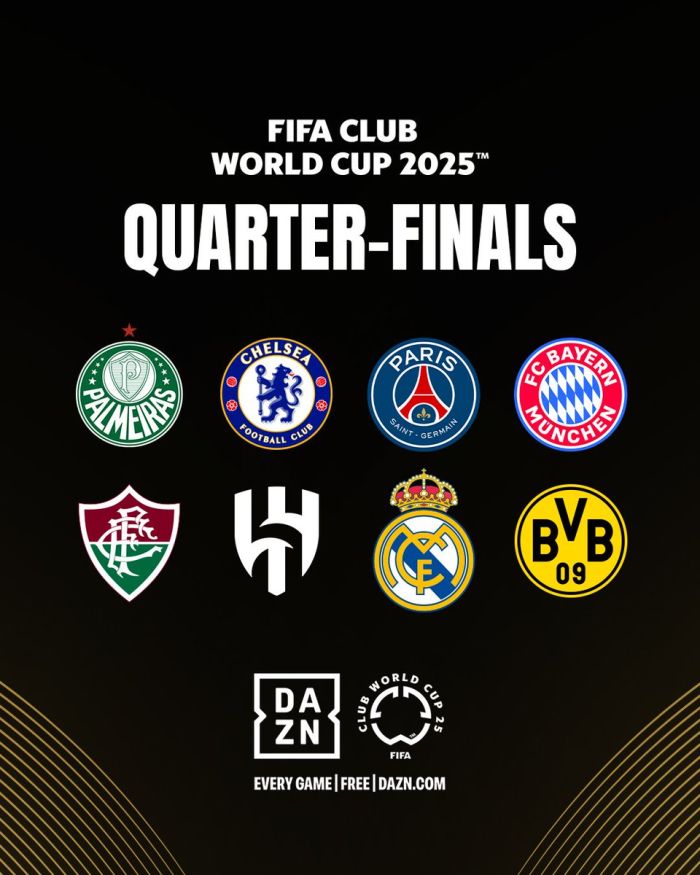Club World Cup Quarter Finals
The excitement of the Club World Cup quarter-finals is palpable, bringing together some of the most elite clubs from around the globe. As fans gear up to witness matches that will determine who will move on to the finals, FIFA has taken a surprising step by making significant cuts to ticket prices. This article will explore the implications of these changes as we navigate through the intricacies of the tournament.
The Landscape of Ticket Pricing in the Club World Cup

Before delving into the specifics of FIFA’s recent ticket price reduction, let’s take a moment to understand the broader context of ticketing in major football tournaments. The economics of ticket pricing can influence a spectator's ability to engage with the sport, thus shaping the overall fan experience.
Understanding Dynamic Pricing Models
Dynamic pricing refers to a flexible pricing strategy where ticket prices fluctuate based on demand and availability.
In a tournament setting like the Club World Cup, this model can be particularly effective. When teams with larger fan bases play, ticket prices tend to rise due to increased demand. Conversely, matches that lack strong fan interest may see prices drop, sometimes dramatically.
This strategy is fueled by various factors such as:
- Demand and Supply: When demand for tickets exceeds supply, prices automatically increase. This is evident during quarter-finals when top teams are in contention.
- Team Popularity: Popular teams like Real Madrid or Chelsea can attract larger crowds, prompting higher ticket prices, while less popular matches may struggle to draw fans.
- Match Importance: As the stakes get higher in knockout rounds, ticket prices can surge as fans want to be part of these pivotal moments.
The Recent Price Cuts: Context and Reaction
FIFA recently made headlines by cutting the standard ticket price for the semi-final clash between Chelsea and Fluminense from a staggering $473.90 to just $13.40. This dramatic decision reflects not only an effort to fill seats but also a response to the mixed reception of matches thus far in the tournament.
Fans and pundits alike have been vocal about this unexpected price reduction:
- Enhancing Accessibility: The move to lower prices, particularly for key matches, aims to enhance accessibility for fans who may have been deterred by the high costs associated with attendance.
- Incentivizing Attendance: With many matches throughout the tournament experiencing sparse crowds, FIFA’s price cut could be seen as a strategic effort to pack the stadiums in crucial matches.
- Online Reaction: Social media is buzzing with both positive feedback and skepticism. Many fans appreciate this as an inclusive gesture while others worry about the implications of such volatile pricing.
Impact of Economic Factors on Attendance
The fluctuating ticket prices cannot be separated from the broader socio-economic environment. Factors affecting attendance include:
- Economic Downturns: In times of recession or economic uncertainty, discretionary spending takes a hit, prompting families to reconsider attending high-cost events such as international football matches.
- Local Demographics: Regions hosting matches with lower average income may place limits on ticket pricing to better reflect the local economy.
- Cultural Relevance: Additionally, the fanbase for certain teams varies by geography, impacting the desirability and pricing structure for event attendance.
A Closer Look at Upcoming Matches

As the semi-finals of the Club World Cup approach, anticipation is mounting for seeing which clubs will come out on top. In this section, we'll explore the details of the pivotal matches, their histories, and what fans can expect.
Chelsea vs. Fluminense: A Clash of Styles
This monumental semi-final is set to take place at the MetLife Stadium in New Jersey and promises an intriguing matchup between two dynamic football cultures.
- Team Profiles:
Chelsea FC, representing Europe, is known for its organized defense and technical prowess. The club has a rich history in international competitions and has consistently been a force in both English and European football.
On the flip side, Fluminense brings a flair synonymous with Brazilian football. Known for their creative play style and fast-paced offense, they represent South America proudly.
- Historical Context:
Matches that feature European clubs against South American teams come with a rich tapestry of historical narratives. They serve as a battle not just for victory but for footballing legends to forge connections across continents.
- What to Expect:
Fans can expect competitive play with contrasting styles, leading to an exciting spectacle. The atmosphere is expected to be electric, with support from dedicated fanbases.
Paris Saint-Germain vs. Real Madrid: A Clash of Powerhouses
This semi-final promises to deliver some of the best talents in football, as European titans Paris Saint-Germain face off against the legendary Real Madrid.
- Superstar Showdown:
PSG, factory of stars with players like Lionel Messi and Neymar, brings a level of excitement that television audiences crave. Their ambition to capture global accolades is relentless.
Real Madrid, with their storied past, boasts a tradition of success and resilience in the face of adversity.
- Previous Encounters:
Historically, matches between these two clubs have delivered moments of magic, tension, and unforgettable drama. Expect nothing less in this high-stakes clash.
- Fan Expectations:
Anticipation among fans is significant, with many believing this match could define the landscape of European football for years to come.
Ticket Sales: The Realities Behind the Numbers

As of late, FIFA's ticketing strategies have come under scrutiny due to attendance issues. To better illustrate the adjustments in ticket pricing, it's helpful to examine key data points.
| Match | Original Ticket Price | Reduced Ticket Price | Crowd Attendance |
|---|---|---|---|
| Chelsea vs. Fluminense | $473.90 | $13.40 | Expected Sparse Crowd |
| PSG vs. Real Madrid | $199.60 | N/A | Dramatic Crowd (60,000+) |
| Fluminense vs. Al Hilal | $TBD | $11.15 | Unpredictable |
| Chelsea vs. Palmeiras | $TBD | $11.15 | Unpredictable |
The data above reflects significant price discrepancies across various matches, highlighting FIFA’s dynamic pricing decisions based on expected attendance patterns.
Analyzing Attendance Trends
As we analyze the data, certain patterns emerge regarding attendance:
- Consistent Support for Top Teams: Real Madrid has consistently drawn high attendance numbers; their history and loyal fanbase ensure packed crowds at their matches no matter the location.
- Challenges for Lesser-Known Matches: Matches featuring less globally recognized clubs like Fluminense or Al Hilal often encounter challenges in gathering crowds, reflecting the importance of well-known teams to attract an audience.
- Impulsive Consumer Behavior: With dynamic pricing, audience anticipation plays a role; lower prices may spur quicker decisions by fans to attend matches, helping to fill seats.
Broader Implications for FIFA and Fan Experience
The pros and cons of dynamic ticket pricing extend into the territory of whether FIFA is genuinely committed to fan engagement or merely looking to capitalize on revenue opportunities.
- The Fan Experience: The fluctuating prices could create disparities in who can afford to attend. While it may fill stadiums, it could alienate devoted fans from the traditional club loyalties by making attending games another consideration of affordability rather than passion.
- Reputation of the Tournament: Maintaining a spectacle in prestigious tournaments is vital. A crowded stadium sends a visual message of excitement and engagement, while sparse attendance paints a bleak picture, impacting the allure of the Club World Cup for future investments.
- The Long-term View: FIFA’s commitment to fan engagement must be balanced with sustainable practices. Moving forward, maintaining a consistent price point that reflects both consumer ability and event significance could ensure a better experience for everyone involved.
Video
Conclusion
The Club World Cup quarter-finals hold extraordinary significance in the footballing world. FIFA’s recent dramatic ticket price cuts demonstrate how market dynamics and consumer accessibility can shape participation. As clubs clash on the pitch with their rich histories, the unpredictable landscape of ticket pricing intertwines with the fan experience and attendance trends. Ultimately, these decisions will not only influence this tournament but set precedents for how football engages with its global fanbase in the future.
